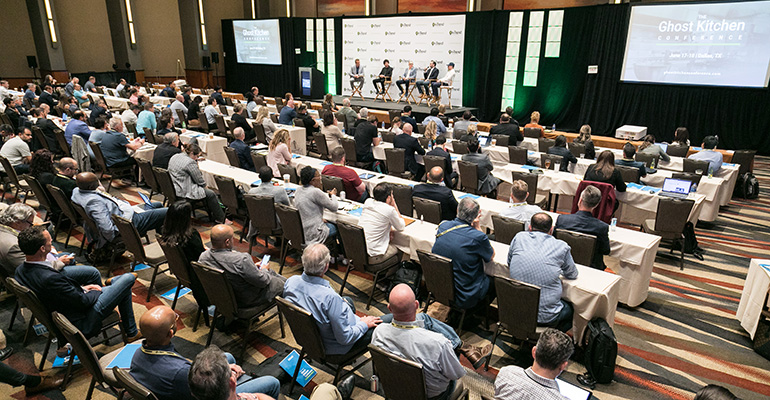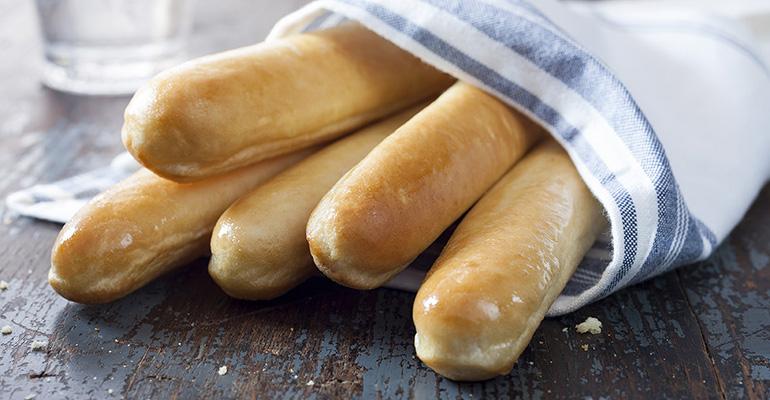The tenor of the Ghost Kitchen Conference held in Dallas on June 17-18 was distinctly upbeat, buoyed by a combination of post-COVID exuberance, pent-up demand for in-person interchange and, most importantly, burgeoning segment growth. The confab played to a sellout crowd of more than 300 participants and wannabes, and the presentations and panel discussions constituted a master class on how to successfully breach the business.
Experts in digital marketing and brand development, kitchen design, site selection, menu development, access to capital and more held center stage, all in the context of rapidly evolving technology. In the course of the program, several themes emerged that may offer both future opportunity and competitive advantage.
Service potential. The opening keynote from Black Box Intelligence noted that, while the restaurant industry’s recent sales recovery has been driven largely by off-premises business, customer satisfaction with these services remains chronically low. Smart restaurateurs described creative initiatives to tackle the issue, like fast-casual Italian specialist Fazoli’s, which saw delivery sales jump 191% in their last fiscal year. Recognizing that happier delivery drivers are a critical link to happier customers, the chain treats drivers like guests and plies them with free helpings of the chain’s popular signature breadsticks. In terms of payback, the proof is in the pasta: Delivery sales since April 1 of this year continue to represent a robust 12% of sales, three times pre-pandemic levels.
Wow Bao, the 18-year-old, Chicago-based Asian street-food concept, started its off-premise business from scratch in January, 2020, and has grown it to a projected 650 operations by the end of 2021. While this runaway success reflects its appealing product line of bao, potstickers and other dumplings, as well as its low labor requirements and broadline distribution strategy, customer service also plays a key role in its expansion. The organization hires dedicated account managers to interface with all of its remote locations in order to gauge and maintain customer satisfaction. Many of those account managers are former delivery drivers, so they bring hands-on know-how to their jobs.
Segment potential. One of the most eye-opening sessions of the program addressed the growing presence of ghost-kitchen operations at retail grocery stores. Operating in Canada, Ghost Kitchen Brands partners with Walmart and offers 20-25 brands like Quizno’s and Cinnabon, often utilizing in-store kitchen space vacated by McDonald’s and other chains.
WOWorks, parent company of brands like Saladworks and Frutta Bowls, has gained a foothold by replacing supermarket salad bars that fell from grace during the pandemic; filling the fresh-food void, its business is evenly split between takeout and delivery orders.
ClusterTruck, a vertically integrated operation that offers 80 made-from-scratch items ranging from pad Thai to chicken wings, looks for underutilized supermarket kitchens in spaces like Kroger delis. Citing Federal Express as a business model, the company relies on its own staff of drivers, some of whom earn $80,000 per year by delivering orders within six to seven minutes of receipt. That optimizes both food quality and driver productivity.
Looking ahead, WOWorks is considering franchising to boost growth and distribution points; Ghost Kitchen Brands promises major disruption in the near future as it exploits opportunity in airports, hotels and other noncommercial venues like campuses and corporate dining; and ClusterTruck foresees future delivery of its supermarket partners’ product lines.
Start-up potential. Several presenters spoke of the opportunity that brick-and-mortarless ghost-kitchen facilities provide for chefs who cannot afford to open a conventional restaurant or who lost their restaurants during the shutdown. But there are other, less obvious possibilities as well. One panelist, for example, spoke of the dearth of insight and intelligence on critical restaurant realities like operational constraints, margin imperatives and patron connection available to these rapidly developing, tech-forward companies.
Another opportunity will be next-gen delivery services that address the stubborn lack of profitability that plagues meal-delivery specialists. The high cost of last-mile, single-customer orders is likely to be mitigated by emerging innovation in areas like robotics, including drones and autonomous delivery vehicles, and technology that bundles multiple orders to maximize efficiency.

The recent Ghost Kitchen Conference in Dallas had a sellout crowd of more than 300 participants.
Several speakers noted the looming influence of Amazon, which has accustomed consumers to near-instant gratification. While no one proposed a restaurant company surrogate, based on the extraordinary optimism for the sector and the speed with which technology related to it is evolving, there was a strong sense that the restaurant industry is transitioning from technology laggard to technology leader and that the next 18 months promise a joy ride that will truly leave the pandemic shutdown in the rearview mirror.
Nancy Kruse, President of the Kruse Company, is a menu trends analyst based in Atlanta. As one of Linked In’s Top 100 Influencers in the US, she blogs regularly on food-related subjects on the Linked In website.





